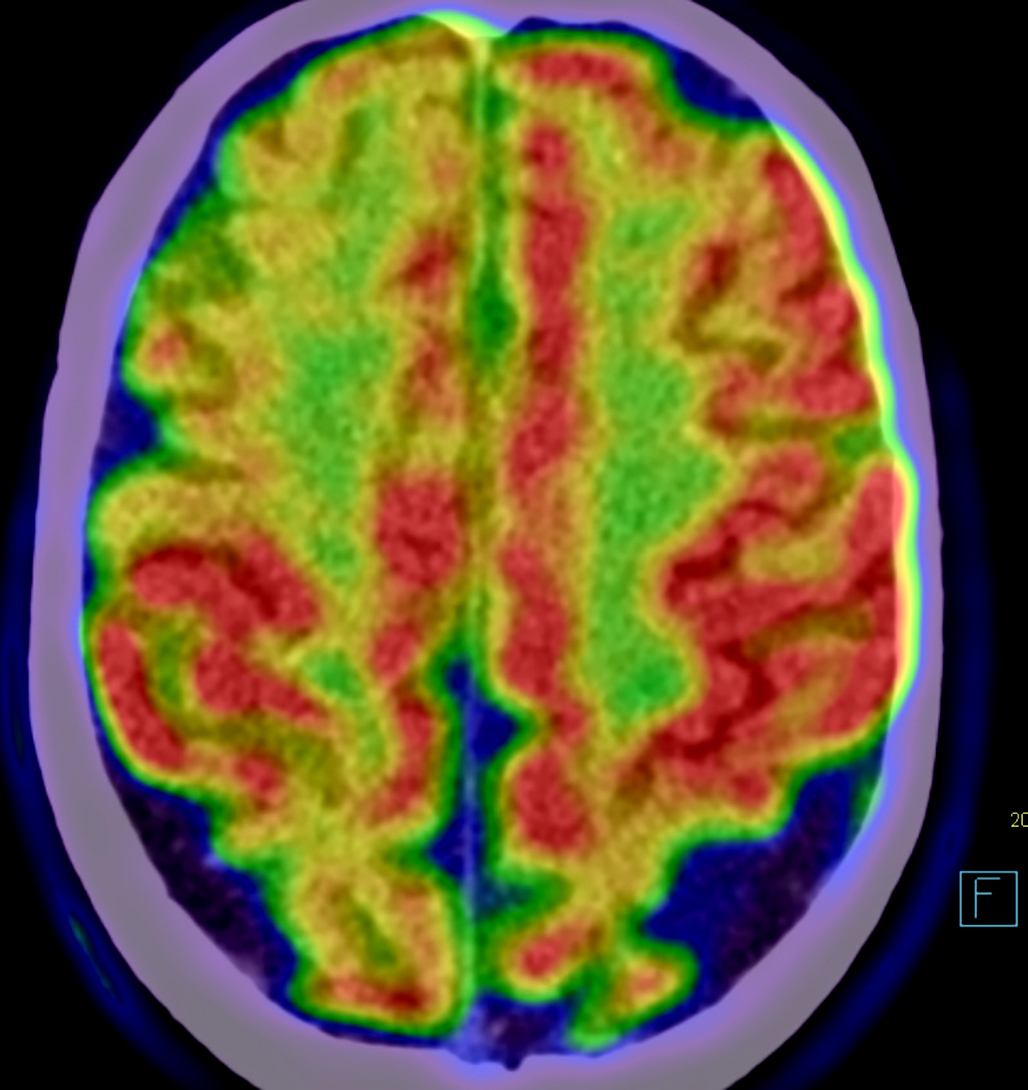Contribution of the 18F-FDG PET/CT IN sporadic Creutzfeldt-Jakob disease
DOI:
https://doi.org/10.53903/01212095.107Keywords:
Creutzfeldt-Jakob disease, Prion disease, Positron-emission tomography, Magnetic resonance imagingAbstract
Sporadic Creutzfeldt-Jakob disease (ECJs) is an extremely rare transmissible neurodegenerative disorder characterized by rapidly progressive dementia. In the positron emission tomography with 18F-fluoro-2-deoxy-D-glucose (FDG-PET) of these patients, bilateral parietal, frontal and occipital cortical hypometabolism has been described, without alterations in the cerebellum or in the basal ganglia, which it could contribute to the differential diagnosis of rapidly progressive dementia. We report a case of a 75-year-old male that had past medical history of prostate cancer and bipolar affective disorder, presented with 2 weeks of behavioral and mood changes, cognitive deficit, visual and auditory hallucinations and spatial disorientation with rapid progression; later he presentedslow gait, intermittent distal tremor in the lower limbs and right Babinski. The contrast-enhanced brain magnetic resonance imaging(MRI) showed diffusion restriction in the bilateral frontal cortex, temporal cortex and cingulate gyrus, with a diagnosis of paraneoplastic syndrome versus prion disease; FDG-PET with hypometabolism in the bilateral frontal cortex and the right temporal and parietal lobe. A study of cerebrospinal fluid protein 14-3-3, T-Tau protein, and real-time quaking-induced conversion (RT-QUIC) indicating a definitive diagnosis of prion disease.
Downloads
References
Mente KP, O’Donnell JK, Jones SE, Cohen ML, Thompson NR, Bizzi A, et al. Fluorodeoxyglucose positron emission tomography (FDG-PET) correlation of histopathology and MRI in prion disease. Alzheimer Dis Assoc Disord. 2017;31(1):1-7.
Fragoso DC, Gonçalves Filho AL da M, Pacheco FT, Barros BR, Aguiar Littig I, Nunes RH, et al. Imaging of Creutzfeldt-Jakob Disease: imaging patterns and their differential diagnosis. RadioGraphics. 2017;37(1):234-57.
Kwon GT, Kwon MS. Diagnostic challenge of rapidly progressing sporadic Creutzfeldt- Jakob disease. BMJ Case Rep. 2019;12(9):e230535.
Mantilla Flórez YF, Muñoz Collazos MA, Pérez Díaz CE, Rodríguez Serrato L, Cañón Bustos S, Tuta EA. Enfermedad de Creutzfeldt-Jakob. Presentación de un caso y revisión de la literatura. Rev Med. 2020;27(2):103-11.
Diagnostic Criteria. Creutzfeldt-Jakob Disease, Classic (CJD). Prion Disease. CDC [Internet]. 2019 [citado: 2021 abr. 8]. Disponible en: https://www.cdc.gov/prions/cjd/diagnostic-criteria.html.
Qi C, Zhang J-T, Zhao W, Xing X-W, Yu S-Y. Sporadic Creutzfeldt-Jakob Disease: A retrospective analysis of 104 cases. Eur Neurol. 2020;83(1):65-72.
Zizi G, Berger H, Lalire P, Dejust S, Morland D. 18F-FDG PET/CT in sporadic Creutzfeldt-Jakob disease. Clin Nucl Med. 2020;45(7):538-9.

Downloads
Published
How to Cite
Issue
Section
License
Copyright (c) 2022 Revista Colombiana de Radiología

This work is licensed under a Creative Commons Attribution-NonCommercial-ShareAlike 4.0 International License.
La Revista Colombiana de Radiología es de acceso abierto y todos sus artículos se encuentran libre y completamente disponibles en línea para todo público sin costo alguno.
Los derechos patrimoniales de autor de los textos y de las imágenes del artículo como han sido transferidos pertenecen a la Asociación Colombiana de Radiología (ACR). Por tanto para su reproducción es necesario solicitar permisos y se debe hacer referencia al artículo de la Revista Colombiana de Radiología en las presentaciones o artículos nuevos donde se incluyan.







